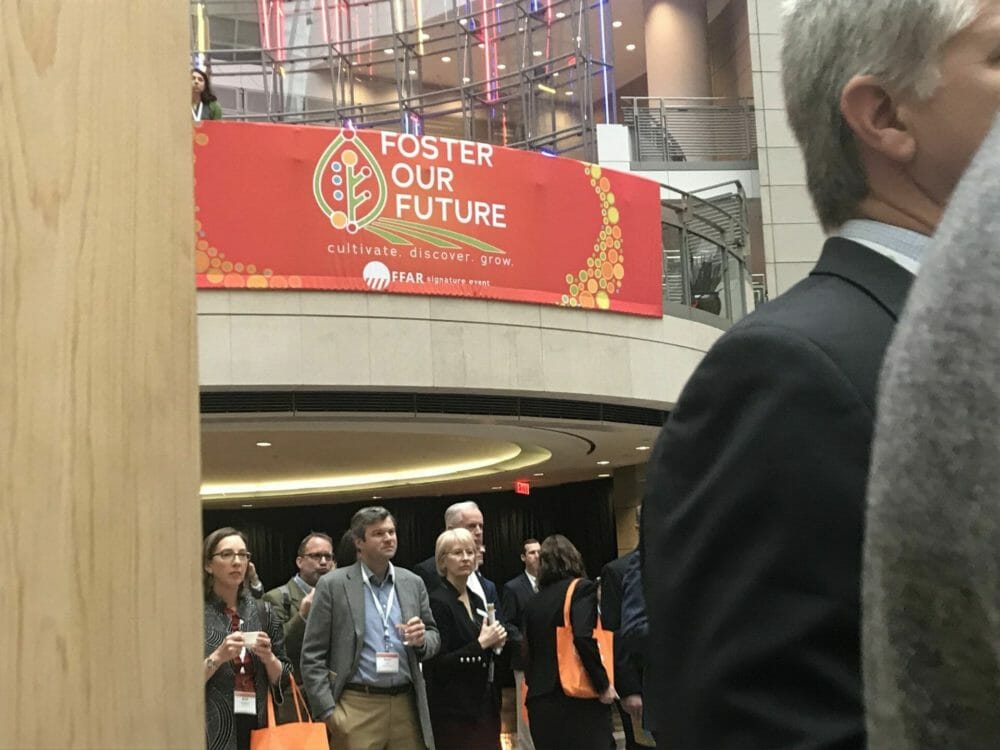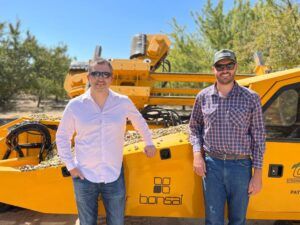The US Department of Agriculture (USDA) is prioritizing sustainable ag intensification with a focus on regenerative ag, water conservation, precision and digital agriculture, and climate adaptation, according to the agency’s chief scientist.
Speaking at an event in Washington DC on Wednesday, Scott Hutchins previewed the department’s Science Blueprint, which outlines the agency’s research priorities through 2025.
“With a changing climate, we need to make sure that our agricultural systems can adapt, they can adjust, and we can move forward,” Hutchins told attendees of the second annual Foster Our Future Summit, hosted by the federally-supported Foundation for Food and Agriculture Research (FFAR), “and it’s science and technology that will give us that opportunity.”
Science & technology provides opportunity
USDA, he says, plans to support research on crop and animal breeding, gene editing, predictive modeling, as well as intercropping to support those goals. Food and nutrition translation, value-added innovation, and policy leadership round out the priorities, which will guide the department’s research funding.
In addition to the Blueprint announcement, the summit also featured discussions led by top researchers on the current challenges and opportunities in agtech. Lisa Ainsworth, a researcher who last year published a study showing that levels of atmospheric ozone found in some of the world’s crop-producing regions (including China and India) could cost row crops between 20-40% of their yield potential, among them. Ozone, a critical component of the Earth’s upper atmosphere that absorbs UV radiation, arises in the lower atmosphere due to emissions, where it can wreak havoc.
“In many locations of the world, ozone is as important as temperature stress or nutrient stress or stress from aridity,” said Ainsworth, showing that in the Midwest it’s causing a 5%-10% reduction in yield. This phenomenon makes improving ozone tolerance in crops of prime importance. Ainsworth’s lab uses experimental plots, treated with high levels of ozone, to develop corn and soybean genetics that are more resistant to ozone pollution, levels of which tend to spike during peak growing season.
A chemical compound called EDU, ethylene diurea, can be sprayed on crops to prevent the negative effects of ozone. It’s effective, she said, but mainly within a few days of application. Given that levels of atmospheric ozone can fluctuate significantly day-to-day, foliar treatments are an unwieldy tool. Instead, Ainsworth and her colleagues at USDA are working on a genetic solution.
“We’re still in the research phase of this,” said Ainsworth, though her team has started to identify some plant genetics that may be manipulated to improve a plant’s resilience to elevated ozone levels. She says she’s worked with scientists at Monsanto to screen some of their genetic lines for these genes. “If we got lucky… we could move into the commercial crop in probably five years.”
Hemp and data privacy
Ozone pollution was just one of many science and technology issues explored at the summit, from growing the US hemp industry to data privacy on the farm to the future of transparency in supply chains. In Washington, public-private partnerships like FFAR are seen as a primary driver of this research, particularly given that tight federal budgets in recent years have limited USDA’s research funds. Though the inaugural Foster Our Future event in 2019 featured several agtech startups, this year’s event was focused on showcasing the efforts of established industry players, from US Farmers and Ranchers Alliance to General Mills and Wegmans.
USDA Secretary Sonny Perdue officially released the research plan Thursday, saying “The USDA Science Blueprint will serve as a roadmap to guide our scientific collaboration over the next five years across the Department and with our partnering research organizations.”




